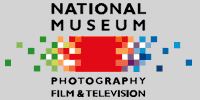 Almost from the beginning of cinematography it was recognised that apparatus using narrower (and thus cheaper) film than the professional 35mm gauge would appeal to amateurs. In 1898, the British pioneer, Birt Acres, brought out a camera taking 17.5mm film - 35mm slit in half. But 35mm film (and any film cut down from it) was on highly inflammable nitrate base, unsafe for home use.
Almost from the beginning of cinematography it was recognised that apparatus using narrower (and thus cheaper) film than the professional 35mm gauge would appeal to amateurs. In 1898, the British pioneer, Birt Acres, brought out a camera taking 17.5mm film - 35mm slit in half. But 35mm film (and any film cut down from it) was on highly inflammable nitrate base, unsafe for home use.
In 1912 Edison in the USA and Pathe in France produced home projectors using 21mm and 28mm film respectively on non-flammable safety base. (The subsequent amateur gauges of 16mm, 9.5mm and 8mm were on safety base as well). They also produced specially printed versions of cinema films for people to show at home - always an important part of amateur film usage.
Ten years later, Pathe's Baby 9.5mm projector appeared, followed in 1923 by the Baby camera. 9.5mm film has sprocket holes running down the centre of the film. In 1923 also, Kodak introduced the 16mm gauge in the USA with an outfit comprising the Model A camera, projector and screen.
16mm film was black-and-white and reversal-processed to produce a direct positive. Kodak and Pathe also established large libraries of professionally-made films for home viewing.
The first British amateur cine club was formed at Cambridge University in 1923 and soon there were 200 clubs throughout the UK. Magazines such as Home Movies and Home Talkies and Amateur Cine World (1934) began to be published. In 1936, Amateur Cine World's Ten Best annual amateur film competition began - it lasted for over fifty years.
Before the War, there were substantial numbers of British-manufactured cameras and projectors with brand names such as Ensign, Dekko, Specto, British Thomson Houston, Pathe and Kodak. British amateurs mainly favoured the 9.5mm gauge - it was much cheaper than 16mm while giving almost the same size picture.
In 1932, Kodak introduced the 8mm format with the Eight-20 camera and projector. The film, 16mm wide, was run twice through the camera to expose pictures first along one half then the other. After processing, the laboratory slit the film and joined the two halves to produce a length of 8mm film.
Colour became available to amateurs first with the lenticular, additive Kodacolor 16mm process in 1928. Dufaycolor 16mm film appeared in 1934 and 16mm Kodachrome came on to the American market in 1935, with an 8mm version the next year. By the late 1950s, 90% of films sold were in colour.
Following the War, there was a huge general increase in camera ownership. 8mm gained in popularity, due to its cheapness and simplicity. 9.5mm use declined while 16mm became increasingly a professional film gauge, used widely in television.
In the 1950s British camera and projector manufacturers flourished. But their fortunes declined in the 1960s with the rise of the Japanese industry and the abolition of import restrictions. Japanese- made equipment dominated the amateur market in the 1960s and 1970s.
In 1965, Kodak introduced the Super 8 gauge, together with the Instamatic range of cameras and projectors. While still 8mm wide, the film had smaller perforations, positioned to give pictures 50% larger than those on standard 8mm film. It came in cartridges for easy loading and was only run once through the camera. At the same time, Fuji brought out Single 8 film, identical in size but loaded in different sized cartridges . Many manufacturers produced Super 8 cameras and projectors and these became popular in the 1970s.
Before the War, some amateurs added sound to their films using disc recorders. 16mm sound became standardised in 1932 with the RCA Victor projector which used single perforated film with an optical sound track along the unperforated edge. In the 1950s 16mm magnetically-striped film appeared. Many amateurs used tape recorders synchronised to their projectors and, from 1960, were able to record sound tracks along the edge of 8mm films. But it was not until 1973, when Kodak introduced their Ektasound Super 8 cameras, that amateurs could easily record synchronised sound and pictures simultaneously.
By the end of the 1970s it was estimated that 10% of British households owned cine cameras. In 1978, Polaroid brought out the Polavision instant movie system that produced a processed colour film ninety seconds after exposure. It was not commercially successful and, in fact, during the 1980s interest in amateur cinematography waned. Sales of cine equipment amounted to less than a fortieth of the total UK photographic market; film purchases also dropped dramatically. Dedicated amateurs and their clubs continued to make films but the majority of "snapshot" cine camera owners ceased to shoot home movies.
Since the late 1980s, many people have taken to home video with the advent of small portable video camcorders.
Michael Harvey
National Museum of Photography, Film & Television, UK
Further reading:
Coe, Brian, The History of Movie Photography, (London, Ash and Grant, 1981) Focal Encyclopedia of Film and Television Techniques, (London, Focal Press, 1969) Matthews, Glenn E. and Raife G. Tarkington, Early History of Amateur Motion-picture Film, (SMPTE Journal, March 1955) McKee, Gerald, The Home Cinema: Classic Home Movie Projectors 1922-1940 (Gerrards Cross, McKee, 1989)